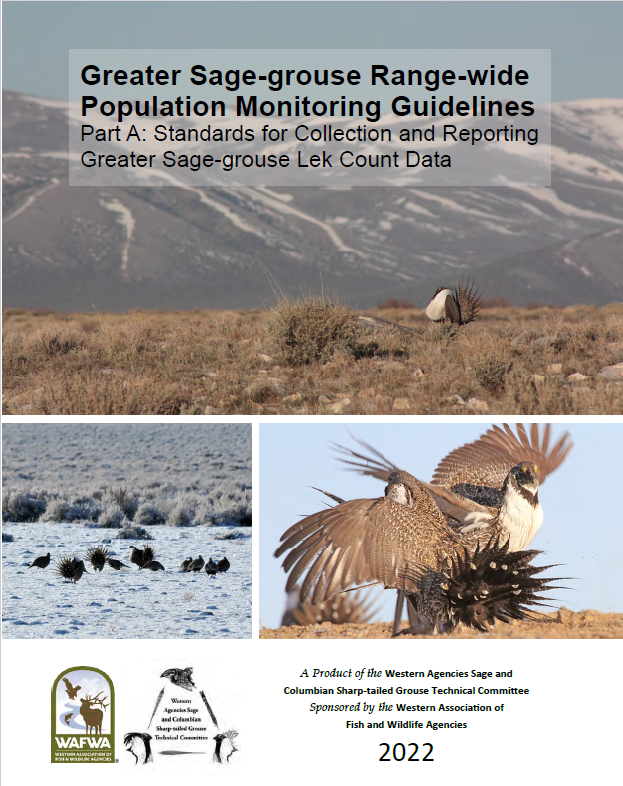Counts of displaying males on leks have been the primary method to monitor sage-grouse (greater sage-grouse, Centrocercus urophasianus, and Gunnison sage-grouse, C. minimus) since scientific investigations of these species began, with the first lek counts recorded in the 1940s (Batterson and Morse 1948, Patterson 1952, Connelly and Schroeder 2007, Johnson and Rowland 2007). Sage-grouse leks are monitored for multiple reasons, to: 1) estimate the trend and potentially the size of sage-grouse breeding populations; 2) determine the location and conservation importance of populations to minimize disturbance and assist in siting of conservation actions; 3) determine whether specific population segments can sustain harvest and help designate season length and bag limits; and 4) inform species distribution models and help guide research. The location, occupancy and/or activity status of sage-grouse leks are commonly used in management and regulatory frameworks as indicators of sage-grouse habitat. Habitat management categories, used to regulate human activity or to direct habitat conservation and management actions, are delineated in part by lek location and density. Simple distance buffers also are placed around leks, within which certain disturbance activities are discouraged, restricted or excluded to conserve the associated nesting habitat (Coates et al. 2013, Manier et al. 2014).
A Product of the Western Agencies Sage and Columbian Sharp-tailed Grouse Technical Committee Sponsored by the Western Association of Fish and Wildlife Agencies, 2022.
Attached Files
| File | Action |
|---|---|
| WAFWA SAGR Monitoring Guidelines Part A 20230908 | Download |
- Version
- File Type pdf
- File Size 0.00 KB
- Publication Date November 3, 2023
- Download Count (since 10/2020) [619]
